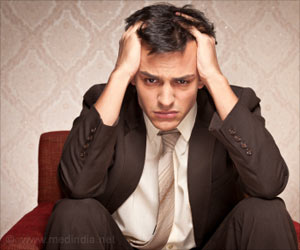People who experience winter depression may actually be suffering from Seasonal Affective Disorder (SAD).
Researchers have found that people who experience winter depression or see their mood, energy level and motivation taking a drop between November to April, may actually be suffering from Seasonal Affective Disorder (SAD).
According to Loyola University Health System doctors, people undergoing SAD notice their frame of mind, energy level and enthusiasm plummeting each November only to return to normal in April.“This condition, characterized by depression, exhaustion and lack of interest in people and regular activities, interferes with a person’s outlook on life and ability to function properly,” said Dr. Angelos Halaris, chair of Loyola’s department of psychiatry and behavioral neurosciences.
He says that the most common type of this mood disorder occurs “during the winter months.”
“SAD is thought to be related to a chemical imbalance in the brain, brought on by lack of light due to winter’s shorter days and typically overcast skies,” he adds.
Halaris said that the bright light affects brain chemistry in a helpful way and acts as an antidepressant.
“With less exposure to light in the winter months, many people become depressed. Those susceptible to SAD are affected even more so,” he said.
However, Halaris adds that people should not lose hope, as SAD is treatable. He advised people get out of their homes during winter for at least one hour each day.
He said that people living in northern states are more often affected by SAD than those living near the equator, with most cases being reported in January. More common in women than in men, SAD starts to show up during the teen years.
Halaris said that symptoms of SAD could be similar to several other conditions, such as mononucleosis, hypoglycemia or hypothyroidism, so it was very important to get proper diagnosis and treatment from an experienced healthcare professional.
“SAD can be effectively treated with light therapy, antidepressant medication and/or psychotherapy. The latest treatment is a headband containing mounted lights that delivers light to your retina whether you are inside or outdoors,” he said.
Halaris said that another version of SAD affects a person only in the summer months, but it is less common.
“Its symptoms, insomnia, appetite loss and weight loss, are directly opposite of the winter version of SAD. High humidity and elevated temperatures may play a role in summer SAD,” he said.
A third type of SAD affects people throughout the entire year. This one is especially linked to people who work year-round in windowless offices.
Source-ANI
SRM/S
 MEDINDIA
MEDINDIA
 Email
Email







